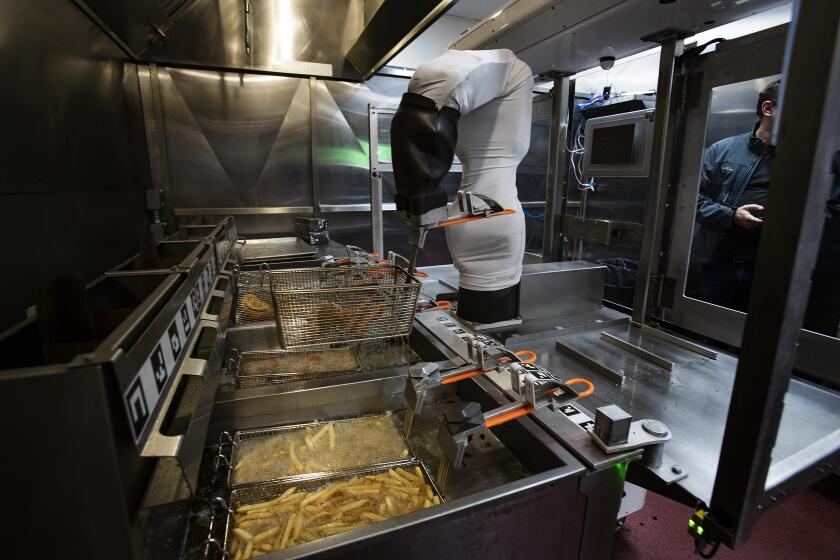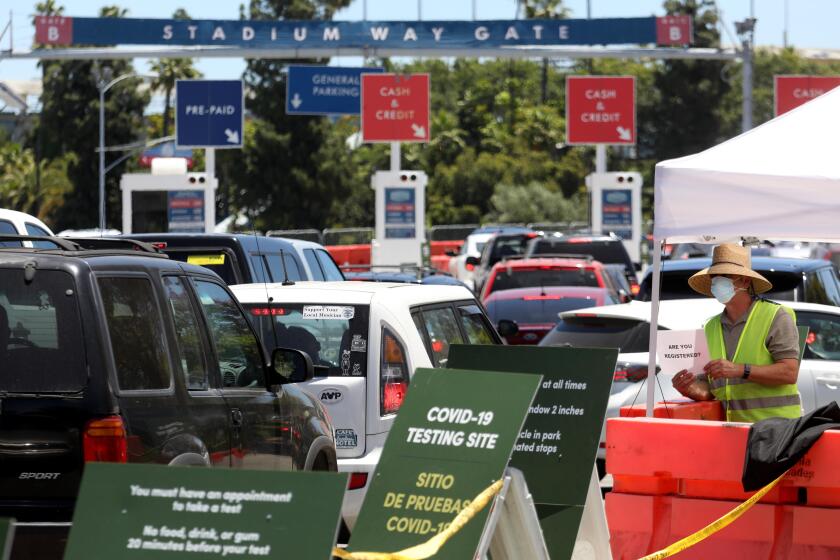For a cold, heartless robot, Sally makes a decent salad
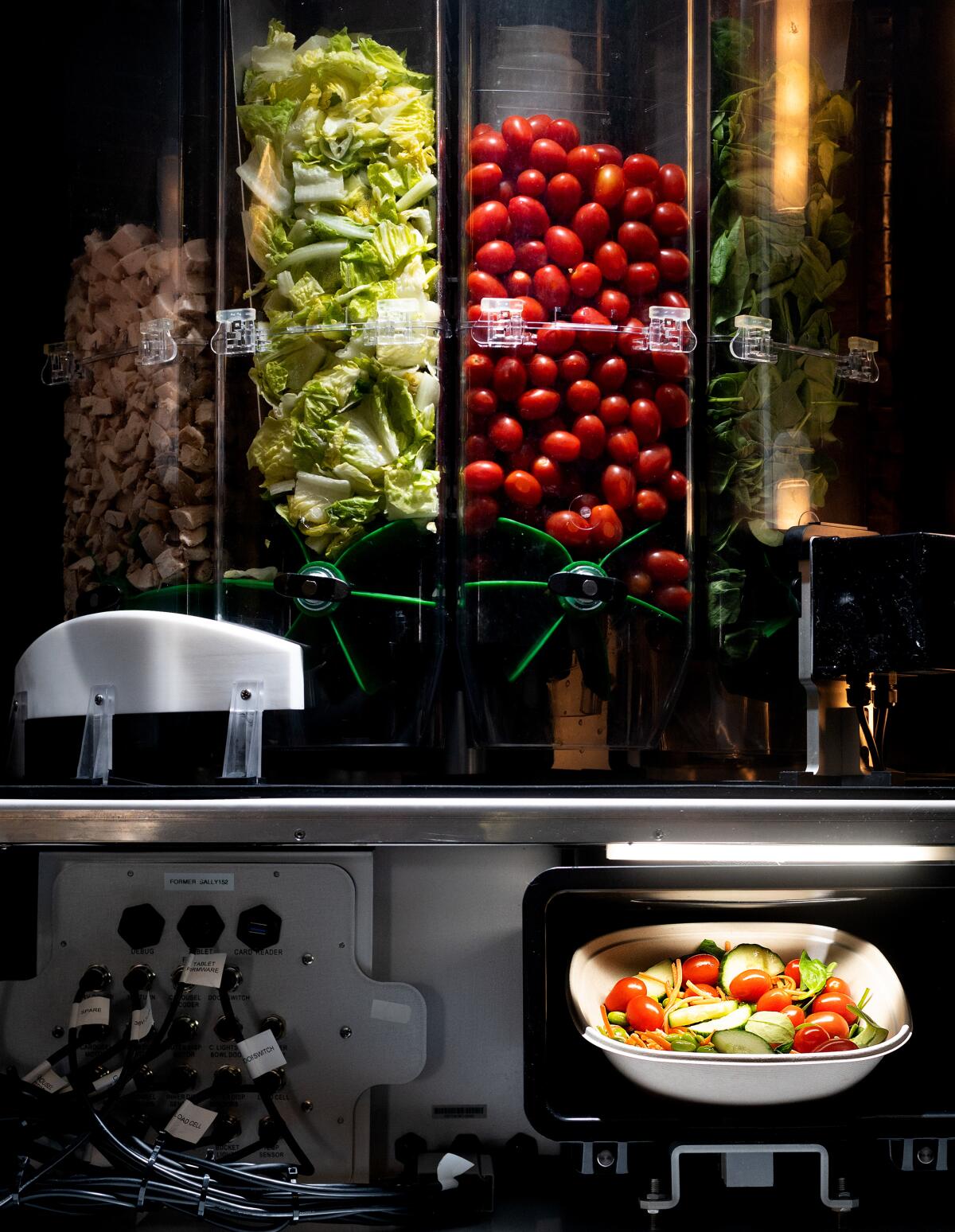
- Share via
For a vending machine, Sally makes a mean salad.
On a visit to Chowbotics’ Bay Area headquarters in March, back when in-person visits were still possible, I tapped my order on Sally’s touchscreen. Immediately, plastic cylinders arranged in concentric rings spun back and forth so that rotating paddles at the bottom of each container could dispense romaine lettuce, cooked grains, pistachios, Parmesan shavings and a precise dollop of dressing into a compostable bowl. Work complete, she emitted chimes reminiscent of a Las Vegas slot machine.
For the record:
3:26 p.m. July 7, 2020The company Farmer’s Fridge was mistakenly referred to as Farmer Fresh.
Just a few months ago, Chowbotics and fellow Bay Area makers of high-tech vending machines selling cappuccinos, hot ramen and warm croissants talked up their appeal in terms of freshness and 24-hour convenience. Then COVID-19 made ordering food dangerous for workers and customers alike. Suddenly, the thought of a machine-dispensed meal seemed less a novelty and more like a survival strategy.
Chowbotics’ chief executive officer, Rick Wilmer, says demand for Sally has skyrocketed since the pandemic hit, particularly in hospital cafeterias and grocery stores that have removed salad bars due to safety concerns.
“If you’re an N95 mask company or a ventilator company, and you happen to be in a business that was driven up as a result of the epidemic, it’s pure luck,” he says. “I can’t call it good luck. But [we have] a solution that fits into the world as it’s happening today.”
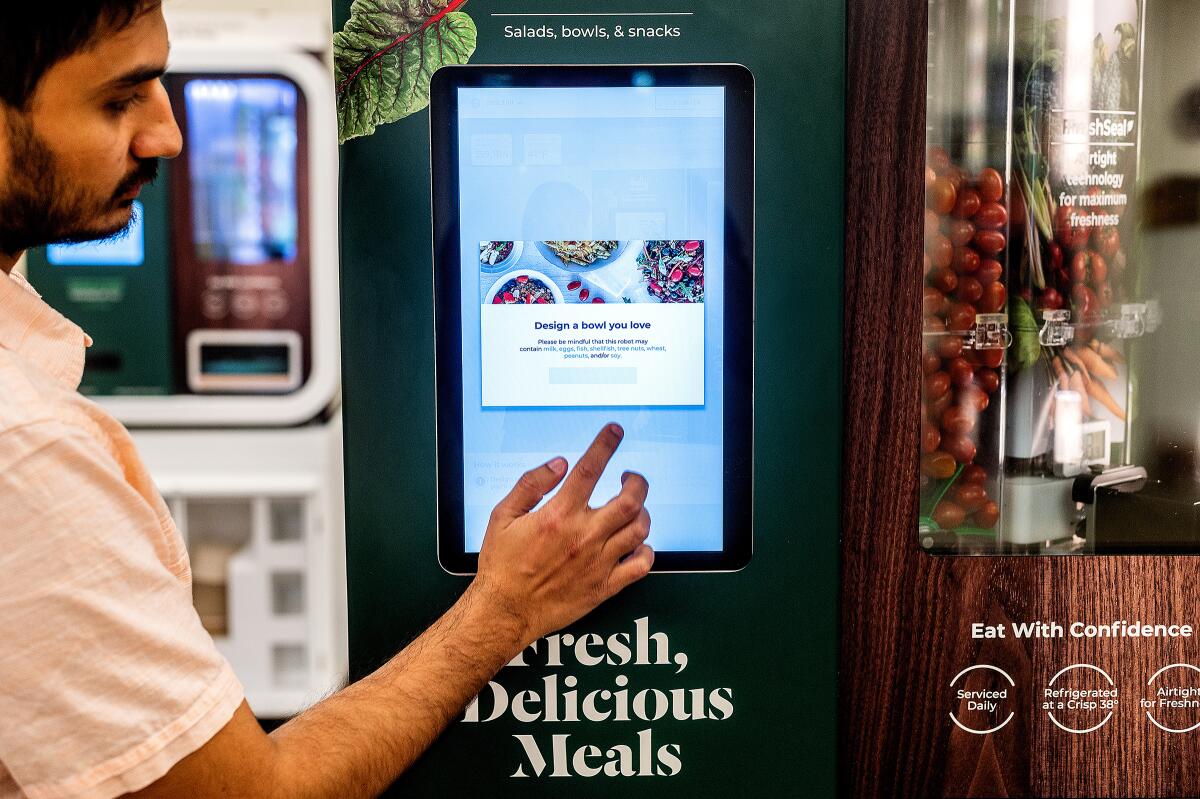
::
Given Silicon Valley’s enthusiasm for burger robots and (failed) robotic pizza delivery vans, it was inevitable that tech companies would turn their attention to the vending machine, maligned savior of the hangry and foe of the dietitian. According to the National Automatic Merchandising Assn., more than 4 million vending machines are deployed around the United States, serving 40 million people a day. The association estimates that vending-machine manufacturers, operators and brokers contributed $10.1 billion to the U.S. economy in 2017.
One of the first robot vending machines to show up in San Francisco was Cafe X, which has an articulated arm that maneuvers cups from an espresso maker to a customer window, before waving its pincer with dystopian insouciance. Soon after its 2017 debut, it was joined by Hayward-based Yo-Kai Express, whose machines produce searingly hot bowls of brothy ramen, udon and pho. Bake Xpress, which dispenses hot croissants, sandwiches and mini pizzas, made its first public appearance this winter at UC Berkeley; a Texas coffee company named Briggo installed a robot barista in San Francisco International Airport in January. Even more of these machines are located in private offices, schools and factories.
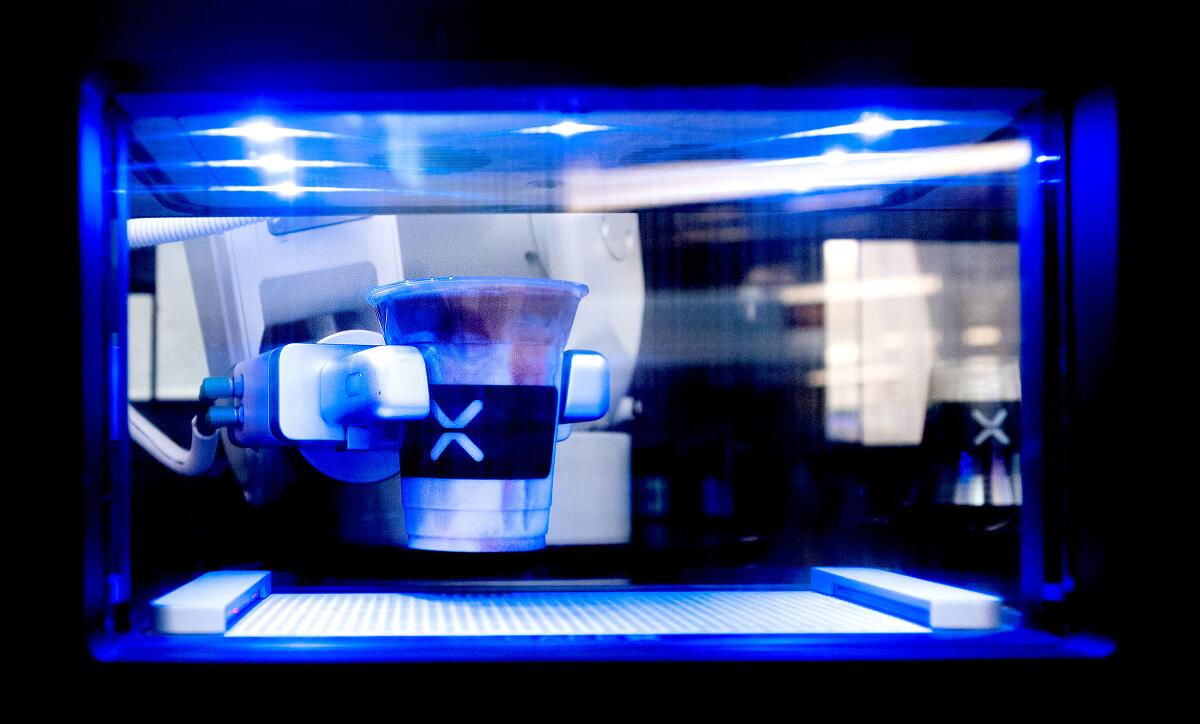
Chowbotics founder Deepak Sekar, originally a mechanical engineer in the flash-memory industry, says that to make Sally do deceptively simple tasks like dispensing precise amounts of cut mango or fragile lettuces, the company took advantage of advances in robotics, sensors and mobile technology to manufacture a machine that it sells for around $35,000.
Over the last 20 years, Heidi Chico, chief executive of the Wittern Group, a vending-machine manufacturer in Des Moines, has seen scores of inventors try to reinvent the vending machine.
“I’ve seen pizza machines, French fry machines, fresh fruit juice machines — believe it or not, a live lobster vending machine,” she said.
Robotic arms like Flippy from Miso Robotics are getting cheap enough to make financial sense for low-wage work. But there’s an argument in the industry.
Chico called the food and beverage segment of her industry a “mature market,” meaning one without much room for growth. Her company still makes candy-bar-and-chips machines but is shifting toward devices that issue hospital scrubs and computer equipment.
“We don’t consider ourselves a vending machine manufacturer,” she said. “More of a controlled dispensing manufacturer.”
Amanda Tsung, chief operating officer of Yo-Kai Express, said she doesn’t call her ramen vending machine a ramen vending machine, either. “We call ourselves autonomous restaurant solutions,” she said, and immediately laughed, conscious of veering into tech-speak. Then she floated another tag: restaurants in a box.
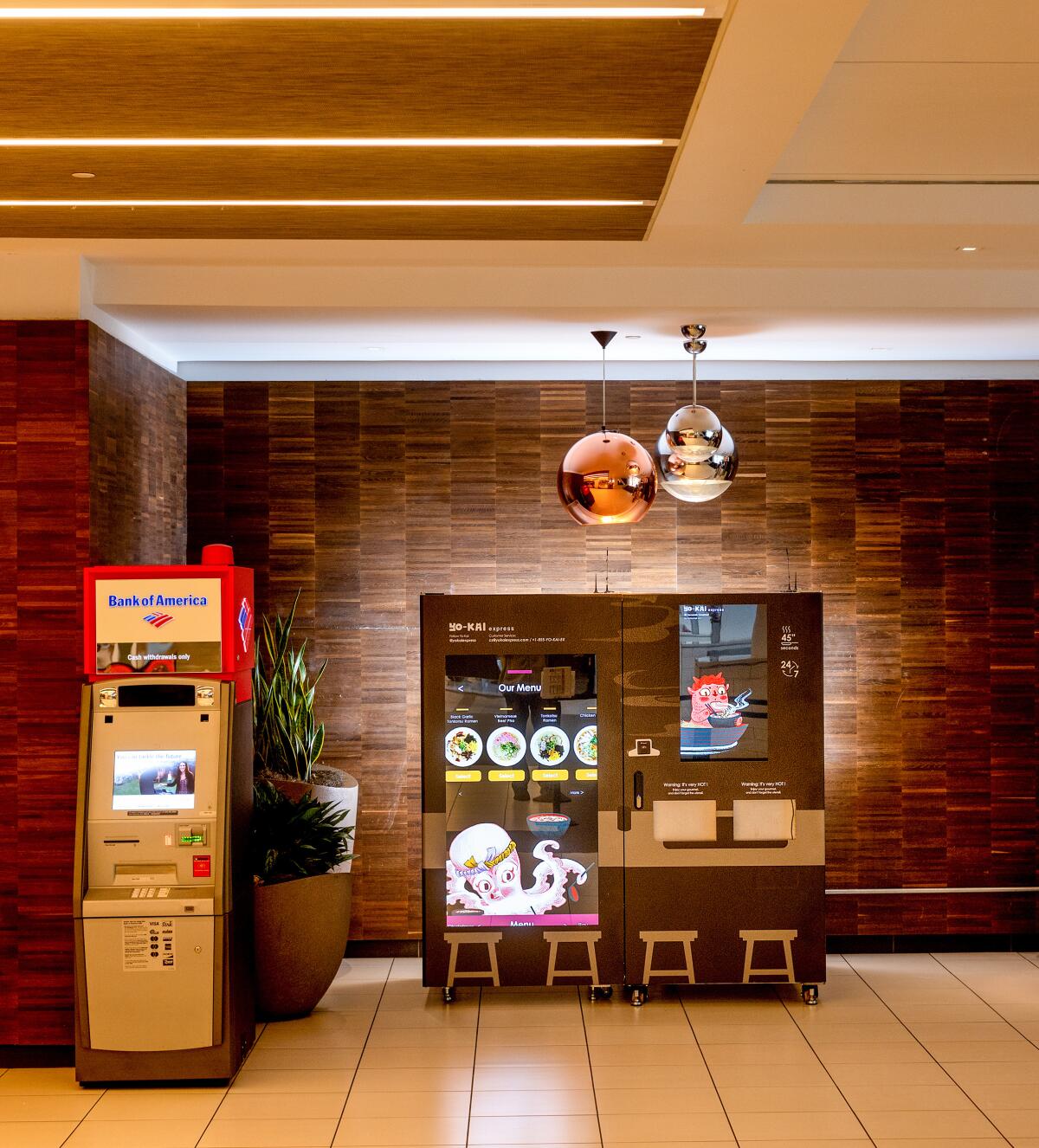
::
Even before COVID-19 forced more than 5.9 million U.S. restaurant employees out of work in March and April, according to Restaurant Business magazine, California’s restaurant industry was feeling the squeeze of rising rents and minimum wages. If bistros were shifting toward counter service to cut down on servers, would diners be more open to the restaurant in a box?
“The vending machine is not going to replace a restaurant,” said Chris Albrecht, editor in chief of the Spoon, which tracks food tech advances. “It’s meant to go in places where a restaurant isn’t feasible.” University dorms. Corporate offices. Airports whose concession stands shut down before the last flights leave. Albrecht even envisioned the appearance of vending machine pods, where customers could buy an array of fresh foods 24 hours a day.
It’s not quite restaurant food yet. Cafe X, I have to say, makes a respectable Americano, using beans from high-end roasters. When I ordered a Yo-Kai Express $11 tonkotsu ramen at a shopping center before the shutdown, a steaming, flimsy plastic bowl emerged from the machine containing al dente noodles and tender roast pork in a thin broth no better or worse than the offerings from the neighboring food court. Bake Xpress’ UC Berkeley location, currently closed, spat out a $6 mini pizza with pallid cheese and crust that toughened as I ate.
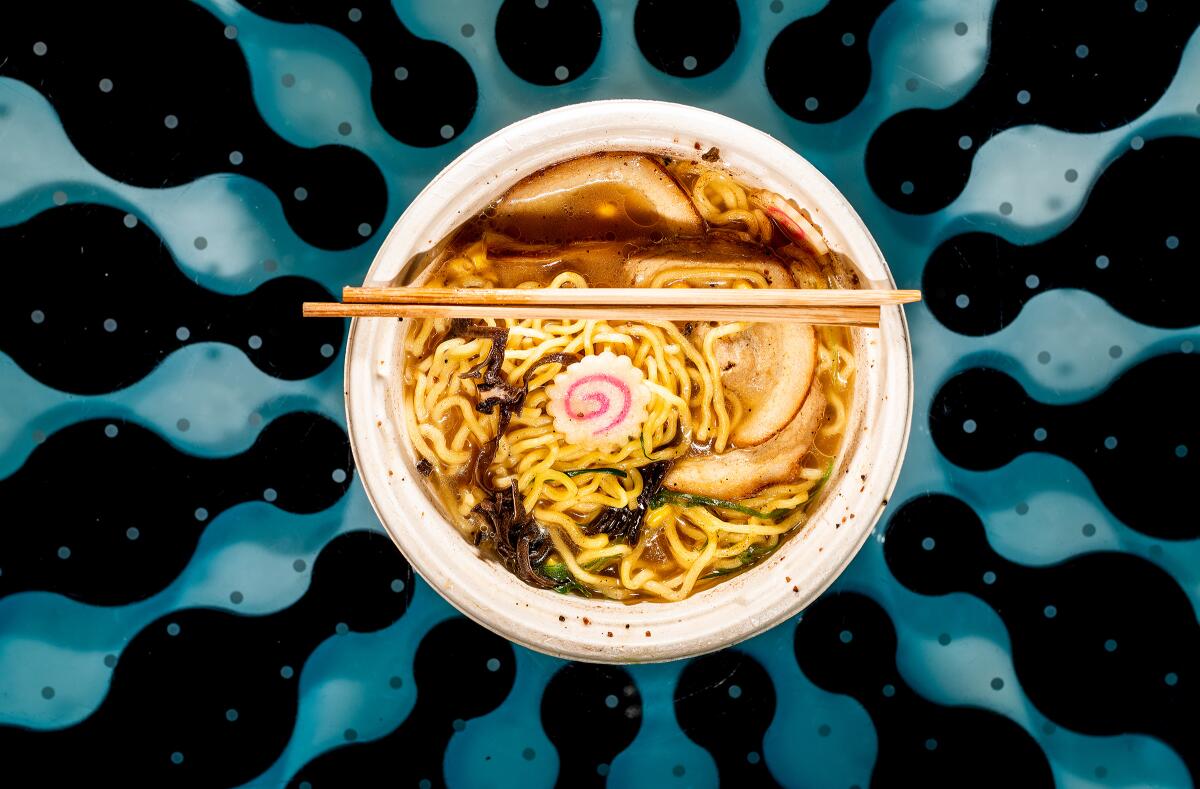
Before the pandemic shutdown, Chowbotics had sold more than 100 Sallys — some to salad chains in the Southeastern states that see the robots as “mini locations.” Given the machine’s small footprint, it also helped clients choose the best spot to place a salad robot. “If you’ve got the wrong location, you just roll it away,” Sekar said. “And it costs 10 times less than a store.”
The company found a particular niche in hospitals with 24-hour workers and patients, where sales hit their peak after the cafeteria closed. “Unlike at salad bars, food is contained, minimizing oxidation and contact, keeping food safer and tastier!” Ochsner Medical Center in Baton Rouge, La., wrote on Facebook pre-pandemic.
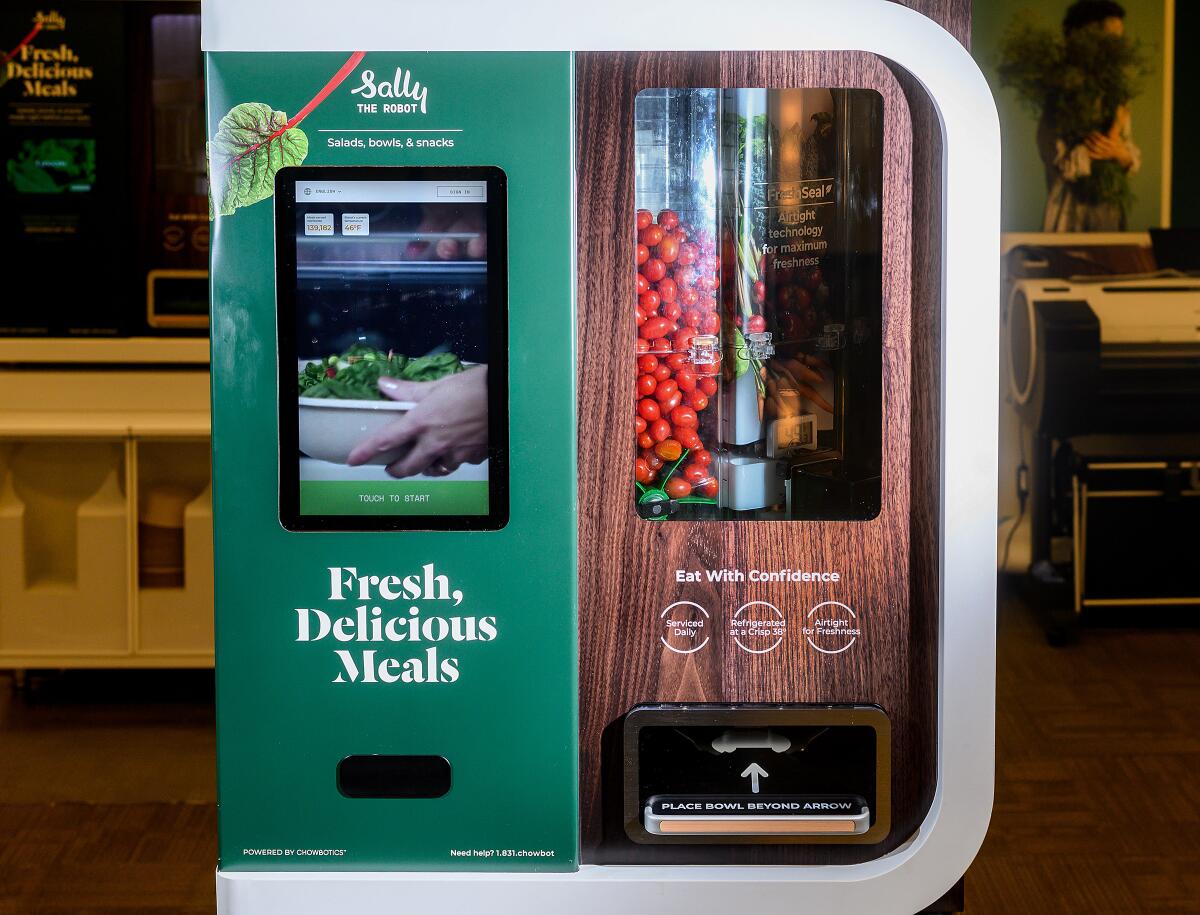
That niche has only expanded since March: According to Chowbotics, 70 hospitals now have Sallys, quadrupling its placements in just three months. (Farmer’s Fridge, a Midwest company whose vending machines dispense jarred salads, has also seen business double at its 100-plus hospital sites since COVID-19 hit.)
Sally keeps her salad ingredients at a constant, food-safe temperature below 40 degrees, which Chowbotics representatives say has helped health inspectors embrace it.
Vending machines selling hot food have taken longer to get the regulatory green light. Benoit Herve, chief executive of Le Bread Xpress, whose “micro-bakeries” maneuver chilled pastries into infrared-microwave combination ovens, says that each time he places one of his machines he has to explain it to the local health department.
“We work very closely with them to explain what we can do, what we’re implementing, to ensure that we meet any requirements,” he says. Now that he has a few machines placed, he said he’s starting to find a certain regulatory momentum that should remove hurdles to spreading his bread machines further and wider.
::
Right now, food safety concerns pale compared with COVID-19 fears. California is in the middle of easing restrictions on restaurants and bars, but more than half of Americans are still wary of entering them, according to a May 20 poll from the Associated Press-NORC Center for Public Affairs Research.
The bulk of California’s cases are still in Los Angeles County, where officials reported 61 additional COVID-19-related deaths and 1,275 new cases on Wednesday.
Many contactless dining options that emerged during the shutdown may become permanent. Reservations and payment systems like Tock and Square introduced new ways to order pickup food and pay without even signing a touchscreen. This month a cafe in Portland, Ore., bought a robotic coffee maker reminiscent of Cafe X to make basic drinks. An automat dispensing dumplings is scheduled to open in New York in July.
In the short term, high-tech vending machines have suffered the same precipitous fall in sales that restaurants have, because many of the locations where they operate have closed or gone dormant. (In fact, Cafe X and Briggo, the two coffee machines that focus on airports, stopped returning The Times’ emails.)
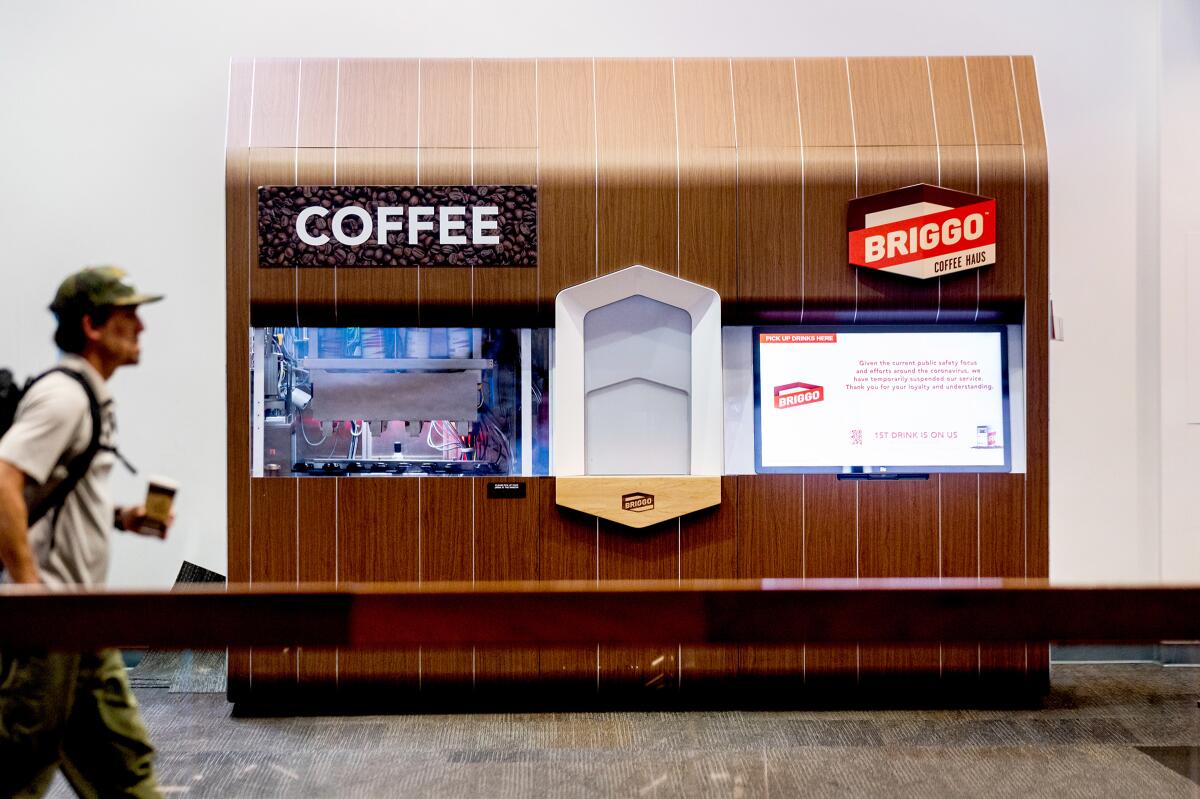
But the mood at many companies is good. “If you look at the big picture, it shows that unattended is going to be a key strategy direction for food options in the future,” Herve says.
The companies are also developing products beyond the machines.
Yo-Kai Express began selling ramen meal kits through its website, offering delivery in the Bay Area and shipping to Southern California. According to Chief Executive Andy Lin, the company has fast-tracked the release of an app that will allow users to order and pay for machine-made noodles through their phones. These changes, Lin said, were in the works before the pandemic hit.
Chowbotics CEO Wilmer says that his company is releasing a smartphone app in the coming weeks to enable contactless ordering. He’s fielding inquiries from senior centers and grocery stores, and the company’s chefs and programmers are developing refrigerated meals — barbecue bowls, breakfast vegetable totchos — that Sally can assemble for customers to microwave at home.
Just three months ago, Chowbotics’ founders saw their market niche as supplying salads in spots that salad bars couldn’t serve. Now salad bars have largely disappeared, and no one knows if or when they will return. The vacuum their disappearance created is changing the company’s path. Convenience may have been the initial selling point for high-tech vending machines, but COVID-19 has presented an even better one: necessity.
More to Read
Eat your way across L.A.
Get our weekly Tasting Notes newsletter for reviews, news and more.
You may occasionally receive promotional content from the Los Angeles Times.
